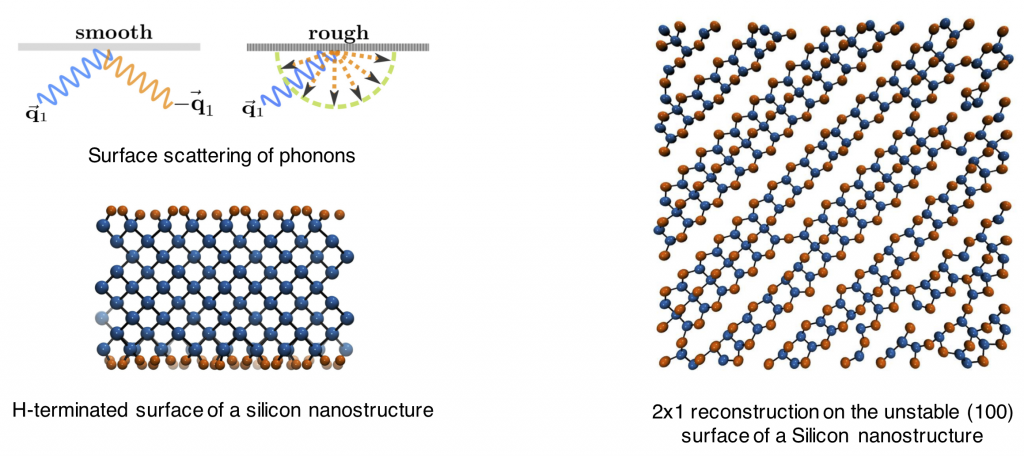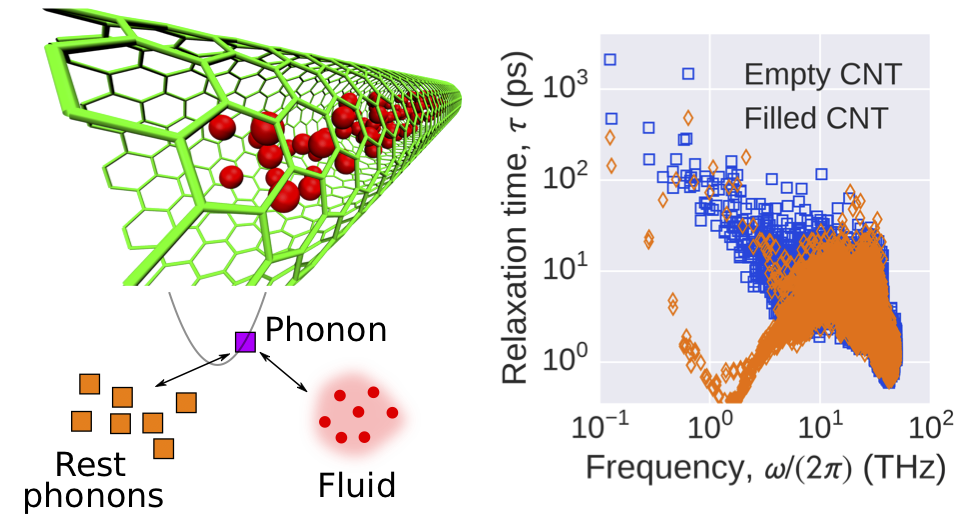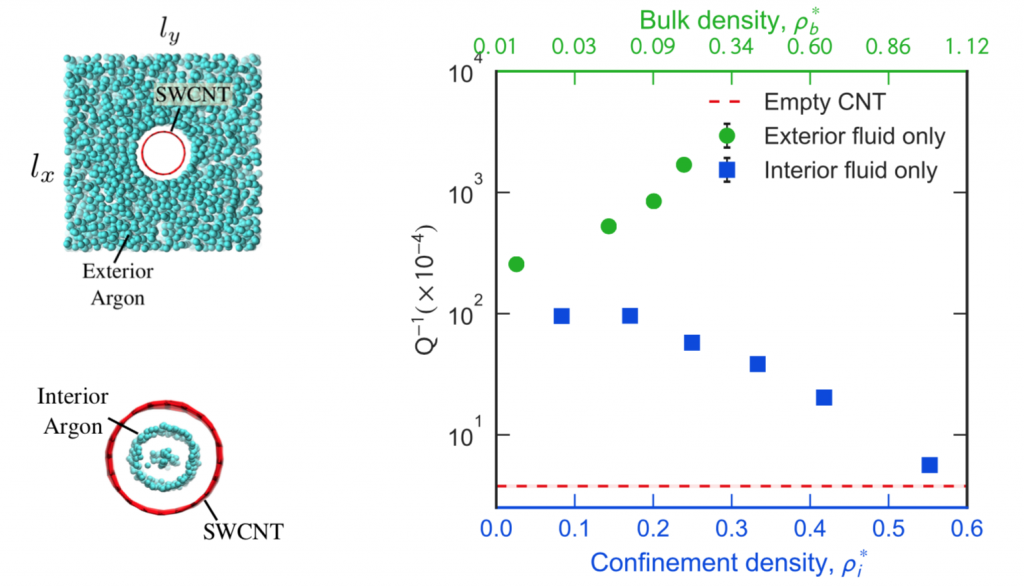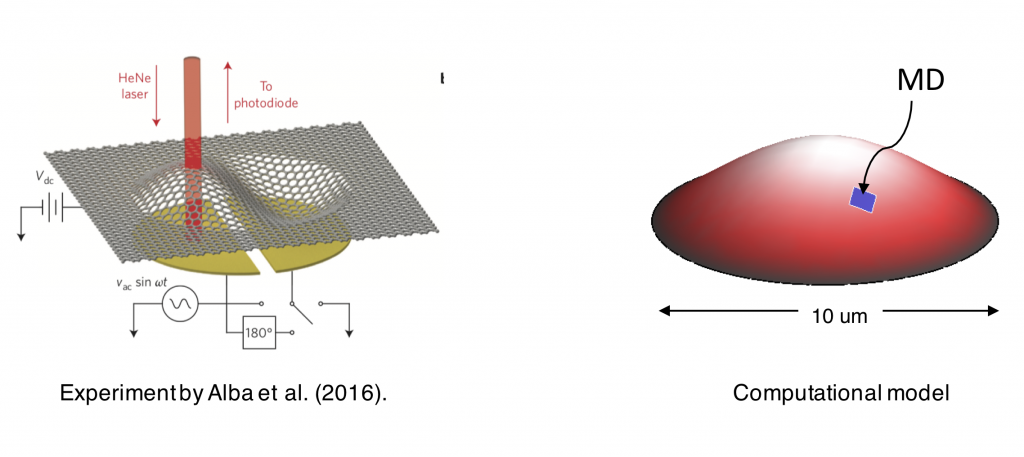Material damping in high-frequency nanoresonators – theory using atomistic simulations
Identifying the sources of mechanical energy loss in a resonating nanostructure is the key to boost their performance. We can broadly classify the sources into intrinsic and extrinsic. Here, we focus on studying the intrinsic dissipation which includes thermo-elastic damping (TED), Akhiezer damping, surface and internal defect mediated losses.
Material damping in gigahertz frequency vibrating nanostructures

Effect of surface and finite-size in the damping for silicon nanostructures

Origin of nonlinearity in damping of atomically thin materials

High-frequency nanofluidics – stochastic modeling using atomistic simulations
Here we focused on dissipation in a gigahertz frequency vibrating structure in a fluid environment. We studied material damping in the Akhiezer limit and developed a stochastic model for the fluid interaction with the nanostructure.
Modification of the material damping due to phonon-fluid scattering

Anomalous behavior of fluid dissipation under nano-confinement

Multiscale analysis of dissipation – a coupled continuum-atomistic model
To date the experimental length scales of the 2D material based resonators are beyond the scope of all-atom simulation. Here we take a multiscale approach to model dissipation in these thin microscale resonators. In the continuum scale, we use numerical methods like Finite Element, Finite Difference, etc. to analyze the dynamics of various resonant structures. To the resonant dynamics, we introduced microscopic details of the thermal motion of the constituent atoms by using atomic-scale simulations.

